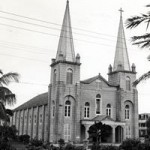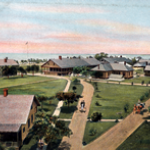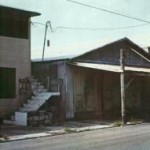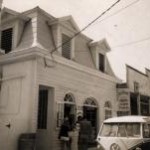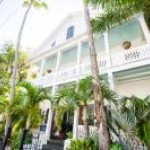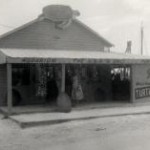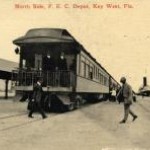Come experience 120 Historic Markers in the Largest Historic District of Frame Buildings in the United States. See photos and listen to the history and stories these buildings have to tell. Take a self-guided tour and discover a little piece of paradise.
Check Out Our YouTube Videos
St. Mary Star of the Sea
Welcome to the oldest Roman Catholic Parish in South Florida. There is evidence that Spanish Jesuits serving in Cuba attempted to establish a mission in Key West as early as 1724. The first Catholic Church on the island was dedicated February 26, 1852. It was destroyed by a fire in 1901. The current church building was dedicated to Saint Mary Star of the Sea by the Bishop of St. Augustine in August of 1905.
North Beach Building
Built for U.S. Army officers, these buildings are a good example of turn of the century military housing. Once part of the Peary Court Army Garrison, they were moved here in the 1940's. North Beach Road connected Peary Court to Truman Avenue. This area was prime waterfront property facing Garrison Bight. As the island expanded the beach side of the street was land locked by development. The road was renamed in honor President Eisenhower.
Island House Resort
Three historic buildings were converted in 1976 to create the resort you see today. Two of the buildings contained apartments for military families living “off baseâ€. The buildings may have been moved across the street from the Key West Army barracks to make room for expansion. The third structure was built as a small cigar factory and was later used as a launderette. The conversion was at the forefront of the new tourism economy that emerged in the 1970s.
Old Custom House
The history of ship wreck salvage is closely tied to the Old Custom House. Ever since man began sailing the open seas there have been shipwrecks. With 200 miles of natural reefs and shoals traversing the Florida Keys it's no place to make a navigational error. Over the centuries, scores of ships have lost their way or were blown onto the reefs by unforeseen storms and hurricanes.
The Samuel O. Johnson
The structure started out as a grocery and butcher shop as well as a residence. It was purchased in 1913 by Dr. William Richard Warren. Dr. Warren's medical offices consisted of the front porch that served as a waiting room and the first floor rooms that were used for exams and minor surgeries. An unusual three-story fresh water cistern is original to the structure. The property is home to one of the island's first ornamental gardens.
Turtle Kraals Restaurant
This rustic structure was built in the early 1950s as an outgrowth of the turtle industry. It was one of the few places in the country where tourists, for a 13 cent admission fee, were able to experience turtle trawlers unloading turtles for market. They witnessed the daily catch placed in turtle kraals and the workings of the soup cannery. It was part gift shop and visitor attraction. The building holds the distinction of being considered the first Historic Seaport attraction.
Flagler's Train Terminal
Henry Flagler's train yard for the Over-Sea Railroad had three piers jutting from the end of Trumbo Road were key to Flagler's vision of having his railway end in Cuba. Ships, docked at the pier closest to the new ferry docks, were used to transport trains to and from Cuba. Ferries were used to carry cars and passengers. The terminal was the railway hub connecting the Keys to the mainland and Cuba to the U.S.
Lighthouse & Keepers Quarters
In 1823, the "U.S. Navy established a base in Key West and the need for a lighthouse became evident. Erecting a warning beacon was essential to reduce shipwrecks on the treacherous reefs surrounding the island. By the mid-1800s there was an average of one wreck per week. The first lighthouse was constructed in 1825 and washed out to sea by the 1846 hurricane. The current structure, built in 1847, stands 14' above sea level with a Keeper's Quarter added in 1887.
Richard Kemp House
The Kemp family was one of the early settlers of Key West. Built on land purchased in 1845, this house replaced the family home destroyed by the Great Fire of 1886. It is the purest example of classical revival Key West-Bahaman style architecture. Richard Kemp is known for classifying the Ridley turtle recognized as Kemp's Turtle today. He introduced Key West sponges to the New York market starting a 50 year long local industry that dominated the U.S. sponge market for decades.
Steam Plant
The Steam Plant's facade endures as an example of Art Deco design that was popularized during the Great Depression. It is one of the few art deco structures in Key West. Streamline Modern was a reaction to Victorian building ornamentation that was the predominant building style for decades. The new style embraced simple lines and aerodynamic curves. It was built by the city in 1951 on new land that industrialist Henry Flagler created for the train depot of his Over-Sea Railroad.
